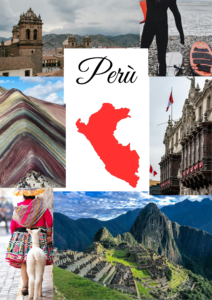Free comprehensive online travel guide to Sacsayhuamán
By Serena Pedrioli
Welcome to Sacsayhuamán, a majestic Inca fortress located in the Cusco region in the heart of the ancient Inca empire. The name Sacsayhuamán means “satisfied hawk” in Quechua, the language of the ancient Incas. Built between 1438 and 1500 during Pachacútec rule, this imposing structure stands on a hill called Carmenca, 2 km north of the city of Cusco.
The site of Sacsayhuamán, which sits a whopping 3,700 m. above sea level, is renowned for its incredibly well-preserved architecture and massive stone walls that reflect the engineering mastery of the Incas. As part of the Tahuantinsuyo, the Inca empire, this fortress was strategically positioned at the top of the hill to ensure the control and defense of the city of Cusco.

Today, visitors can explore the impressive ruins of Sacsayhuamán declared a UNESCO World Heritage Site in 1983. The fortress also offers breathtaking views of the city of Cusco and the surrounding picturesque landscapes. Add Sacsayhuamán to your list of must-see destinations during your trip to Cusco and discover the history and grandeur of the ancient Inca Empire. In the following article you will find a complete guide to the archaeological site.
Table of Contents

History of the archaeological site
Construction of this imposing fortress appears to have begun during the reign of Pachacútec and was continued by successive Inca rulers, including Túpac Yupanqui and Huayna Cápac. According to Garcilaso de la Vega’s chronicles, four architects of great skill, including the principal Ap Huallpa Rimachi, took part in the design and direction of the work, which lasted about 70 years. It is estimated that there were approximately 20,000 workers who contributed to the construction of this majestic structure.
However, it is important to note that to date, it has not yet been possible to trace the exact construction period of the fortress. In fact, recent archaeological sources attest that it was the indigenous people of the Killke culture who laid the foundations of the imposing structure of this fortress around 1’100 AD. Moreover, information on how it was built and what its true function was remains inconclusive.
Unfortunately, its grandeur and magnificence were not enough to protect it from the advance of the Spanish conquistadors during the siege of Cusco in 1536. The conquistadors took the fortress and used many stones to build houses and churches in the city of Cusco. Over the centuries, many stones, both large and small, have been removed from the site, changing its original structure.
Architecture
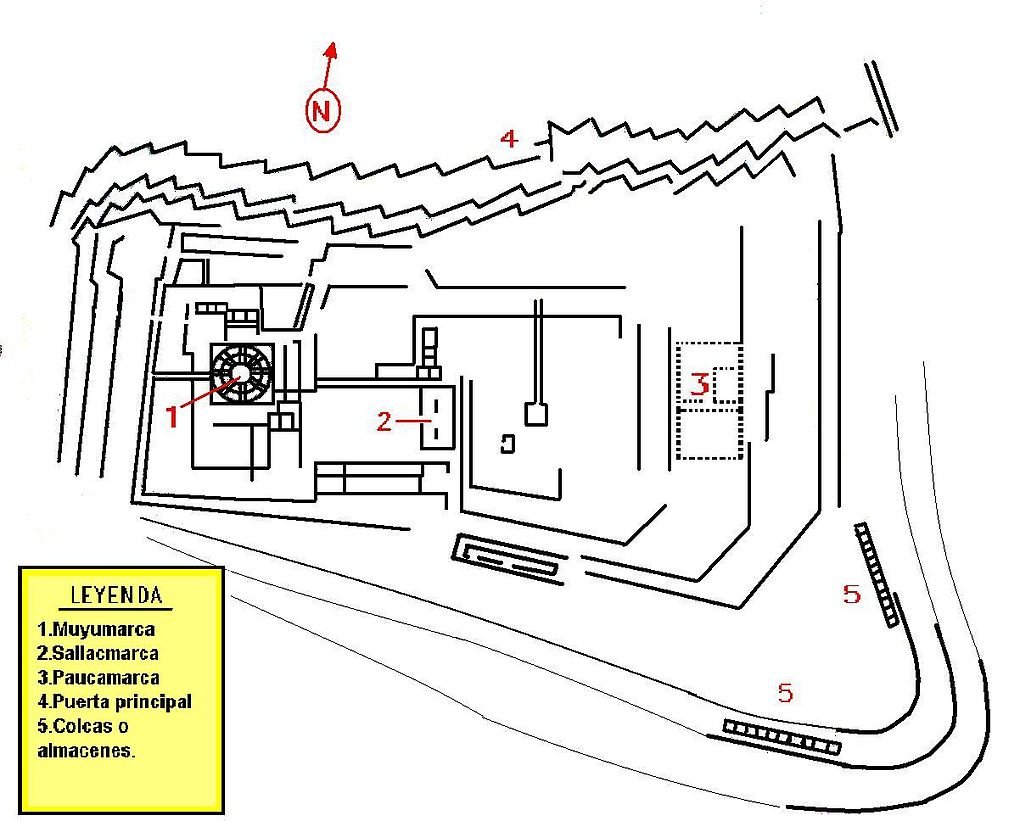
Sacsayhuamán, the mighty Inca fortress located above the city of Cusco, was conceived as the head of a lying puma, according to the urban design attributed to Pachacútec Inca Yupanqui. This interpretation is supported by the zig-zag shape of its walls, which resemble the jaws of the big cat, while the top of the fortress represents the animal's eye.
However, the arrival of the Spanish conquistadors altered this conception, with the removal of towers and stones that made the shape of the puma less obvious.
The size and precision of the constructions at Sacsayhuamán are impressive, especially considering the limited technology available at the time. The stone blocks, crafted with extreme skill, were set with such precision that not even the blade of a knife passes between them. This technical skill has left scholars still astonished today, especially considering that the stones are smooth and finished, similar to Spanish architectural works but with a robustness and power that surpasses that of many European fortresses.
Exploring Sacsayhuamán is a fascinating experience, allowing you to immerse yourself in the grandeur and ingenuity of the ancient Inca empire and to appreciate the magnificence of one of its most important architectural
Free guided tour

The 3 Towers (marka in Quechua)
They are called Muyuccmarca, Paucarmarca, Sallaqmarca and are located at the top of the ramparts (zigzag walls). During Inca times, they were torreons arranged in a straight line on the top of the hill, where there was abundant water; we can still see part of the aqueducts today. Muyuccmarca comes from Quechua: “Muyuq” means: round, “Marca”: settlement. It housed the Inca king and his court during periods of meditation and fasting. From its rediscovered foundations, one can see its circular shape, which has three concentric circumferences all embedded in a square with unequal sides. The significance of this star-shaped structure has not yet been clarified. According to legend, the tower was connected to the Temple of the Sun by a network of underground tunnels.
Paucarmarca, on the south side of Sayaqmarca, is covered with earth and may have been quadrangular in shape. Etymologically, “Pauca” means festive, beautiful, joyful, garden and “Marca” settlement. It is believed to have had a religious function and was dedicated to the stars.
Sallaqmarca is located next to Muyuccmarca and etymologically comes from “Sallaq” rugged, stony and “Marca” settlement. This was reserved for the garrison and housed stores of provisions, weapons, and clothing.
Currently only the foundations of the Torreones remain; the buildings were destroyed in the early days of the colony and their foundations were covered by earth; they were later identified and recovered by Dr. Luis E. Valcárcel.
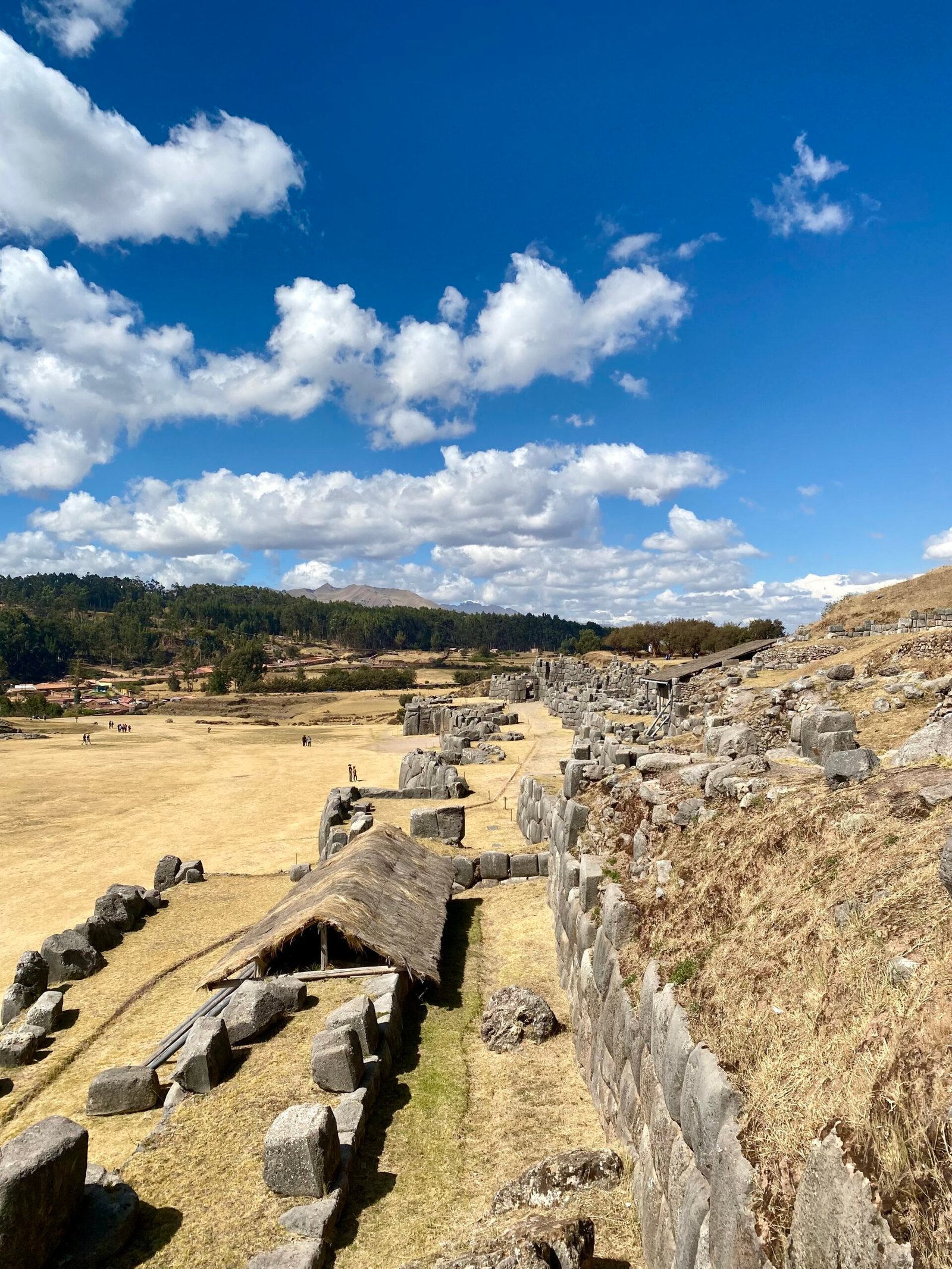
Group of terraces
The terrace group is located on the top of the hill, to the south and a short distance from the towers. These are splendid rooms leaning against the hill, overlooking the plazas of the Inca city. They were built with megalithic boulders, some of which weigh more than 100 tons. The first terrace has walls about 9 meters high and 350 meters long. The stones were cut and fitted together with incredible precision.The rooms themselves have the characteristic of being long and narrow, communicating with each other through a series of trapezoidal doors. Their walls are composed of irregular polyhedra, with steep faces and well-polished edges.
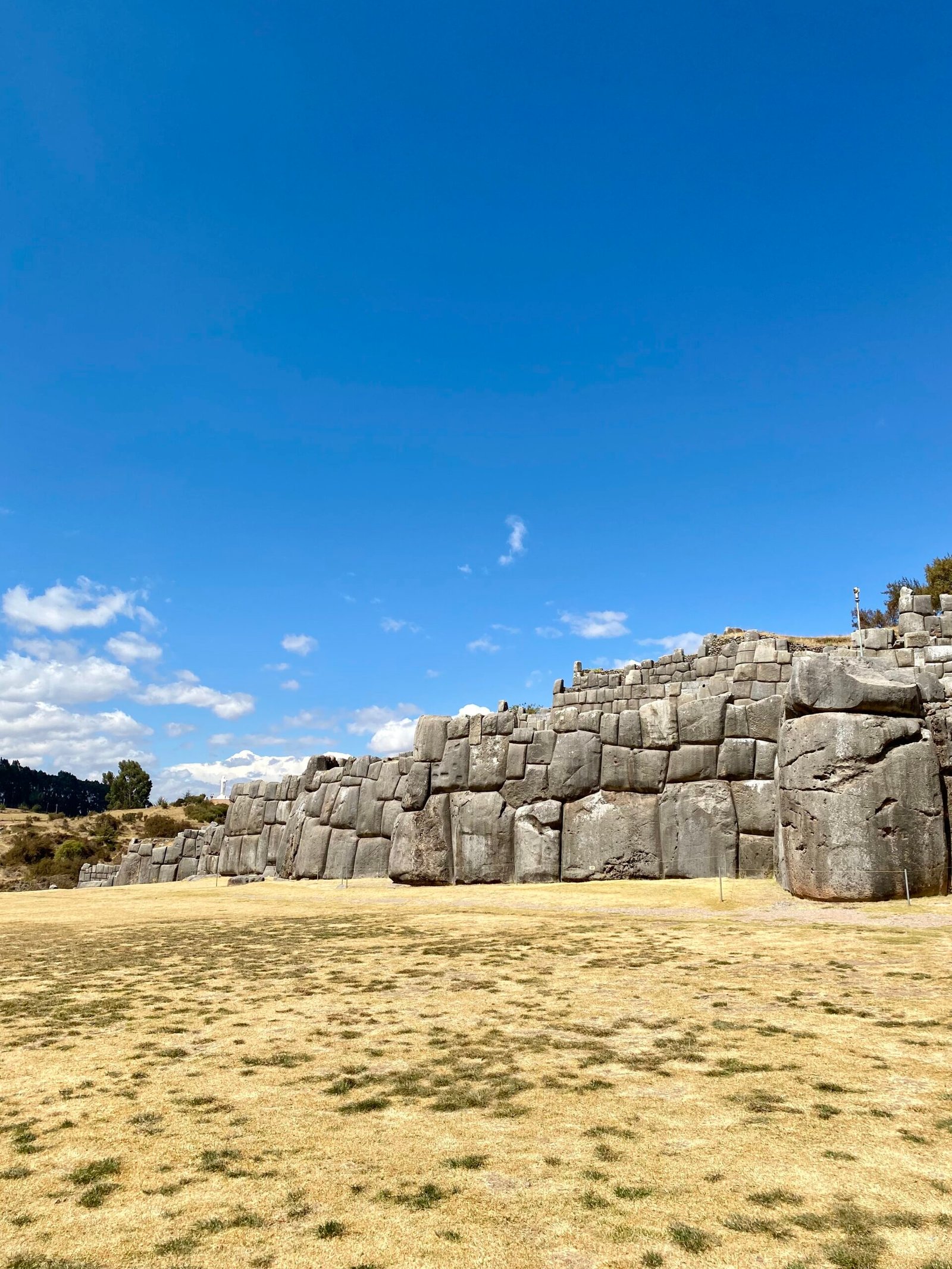
The ramparts
The Bastions are the three platforms that form a serrated profile of ledges and recesses, consisting of walls made of limestone blocks, impressive irregular polyhedra assembled with extraordinary precision. The three rows of walls, about three hundred meters long and made of huge stone boulders, mainly porphyry and andesite. The stones used are up to 5 meters high, about 2.5 meters wide and can weigh between 90 and 120 tons, highlighting the enormous effort and craftsmanship required to lay them. Early Spaniards attributed their construction to demons, and to this day there is still talk of the supposed extraterrestrial origins of this work. These ramparts are considered a world wonder.
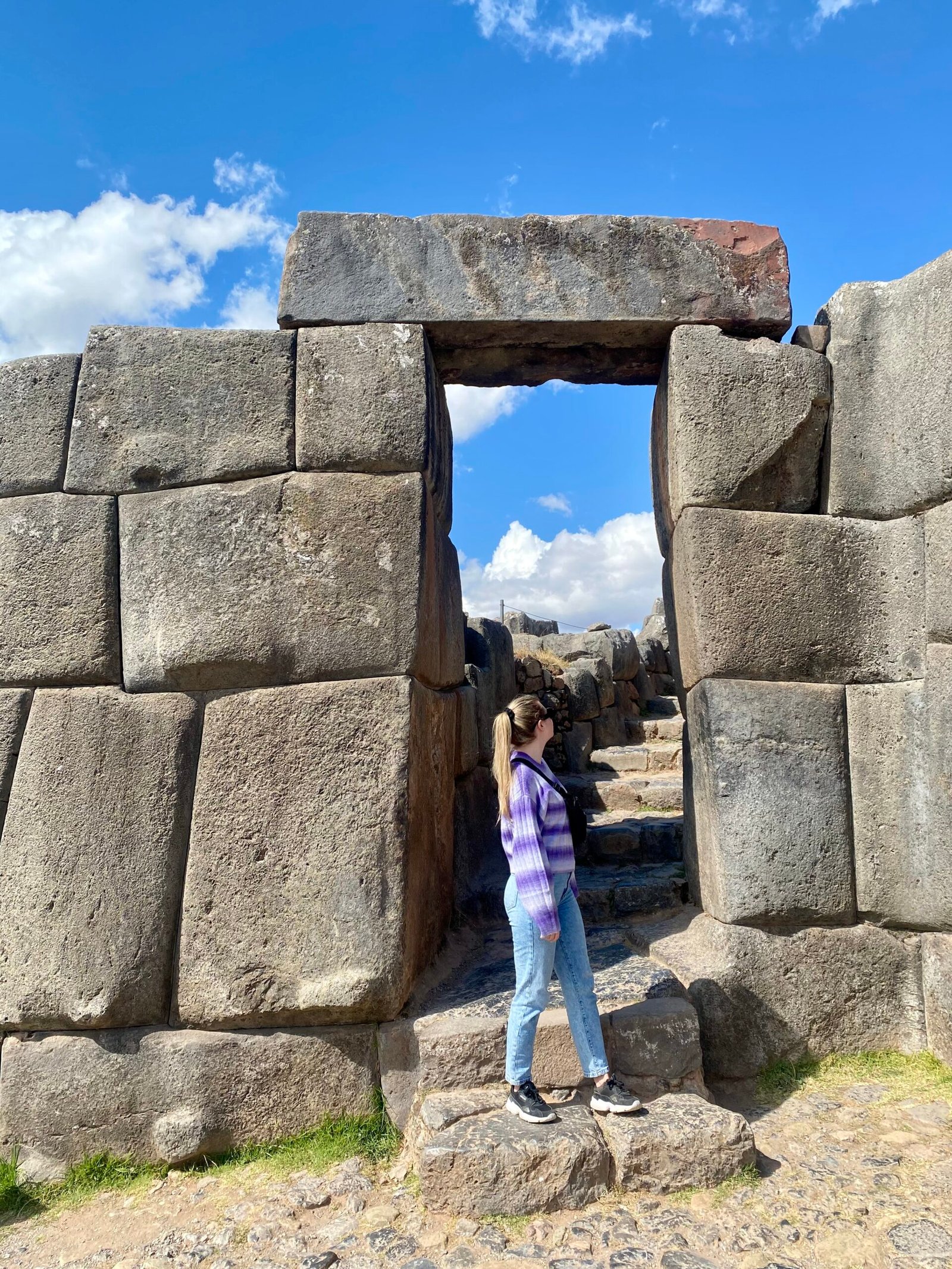
The doors
Positioned in the middle and middle part of the ramparts, with trapezoidal shapes, these served as the entrance to the tower area. The three gates mentioned are: T'iopunku, Ajawanapunku, Wiracochapunku. These connect the different levels of the fortress through staircases. They are also astral landmarks, aligned with the position of the sun and moon.
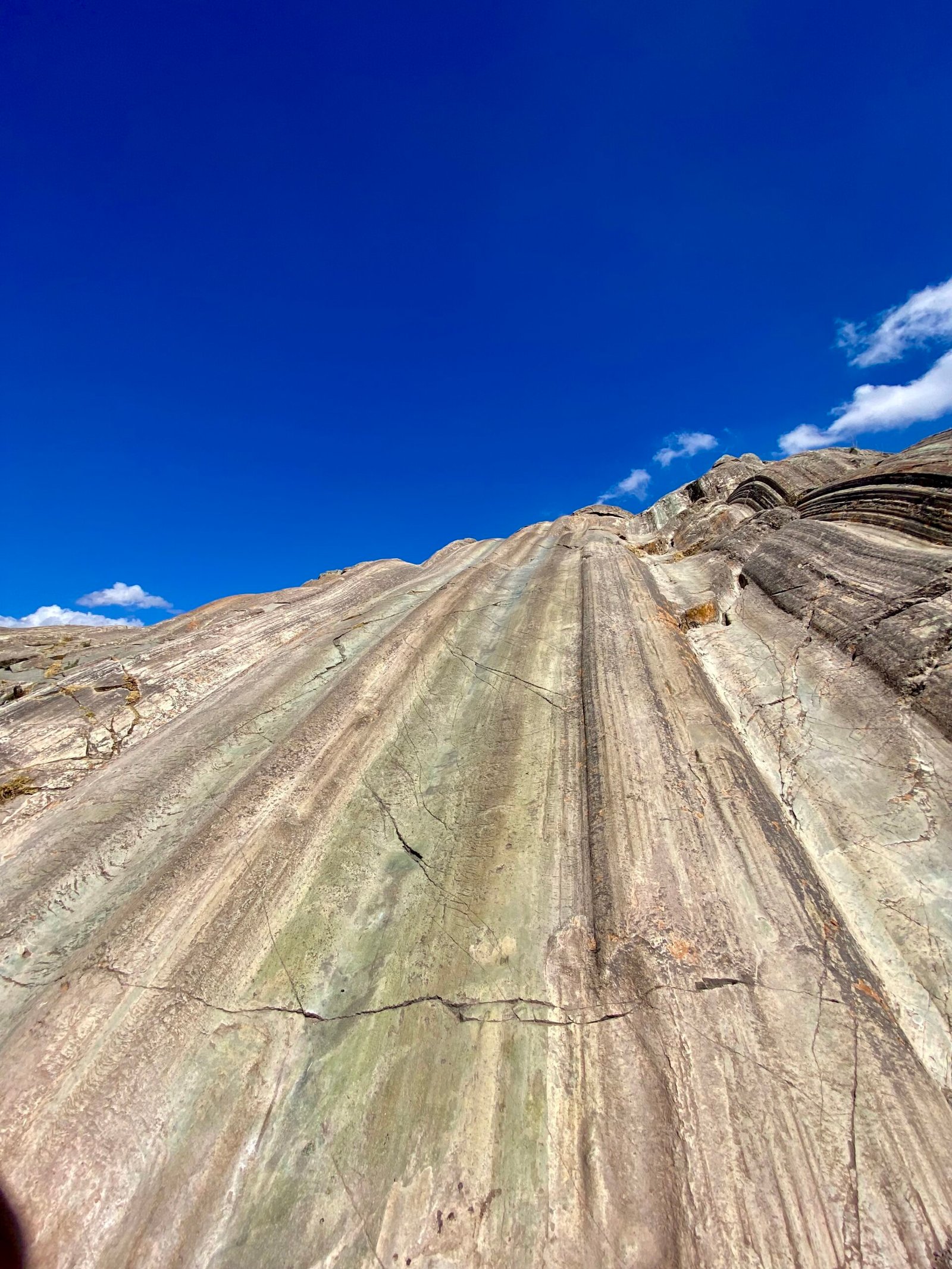
Rodadero or Suchuna
Geologically, it is a natural formation of diorite, volcanic in origin, which as it emerged it shaped concavities and grooves on its surface similar to chutes. Rodadero is a smooth, sloping stone feature that may have been used for ritual activities such as rolling objects downhill. Its Quechua name, Suchuna, means “slide.”
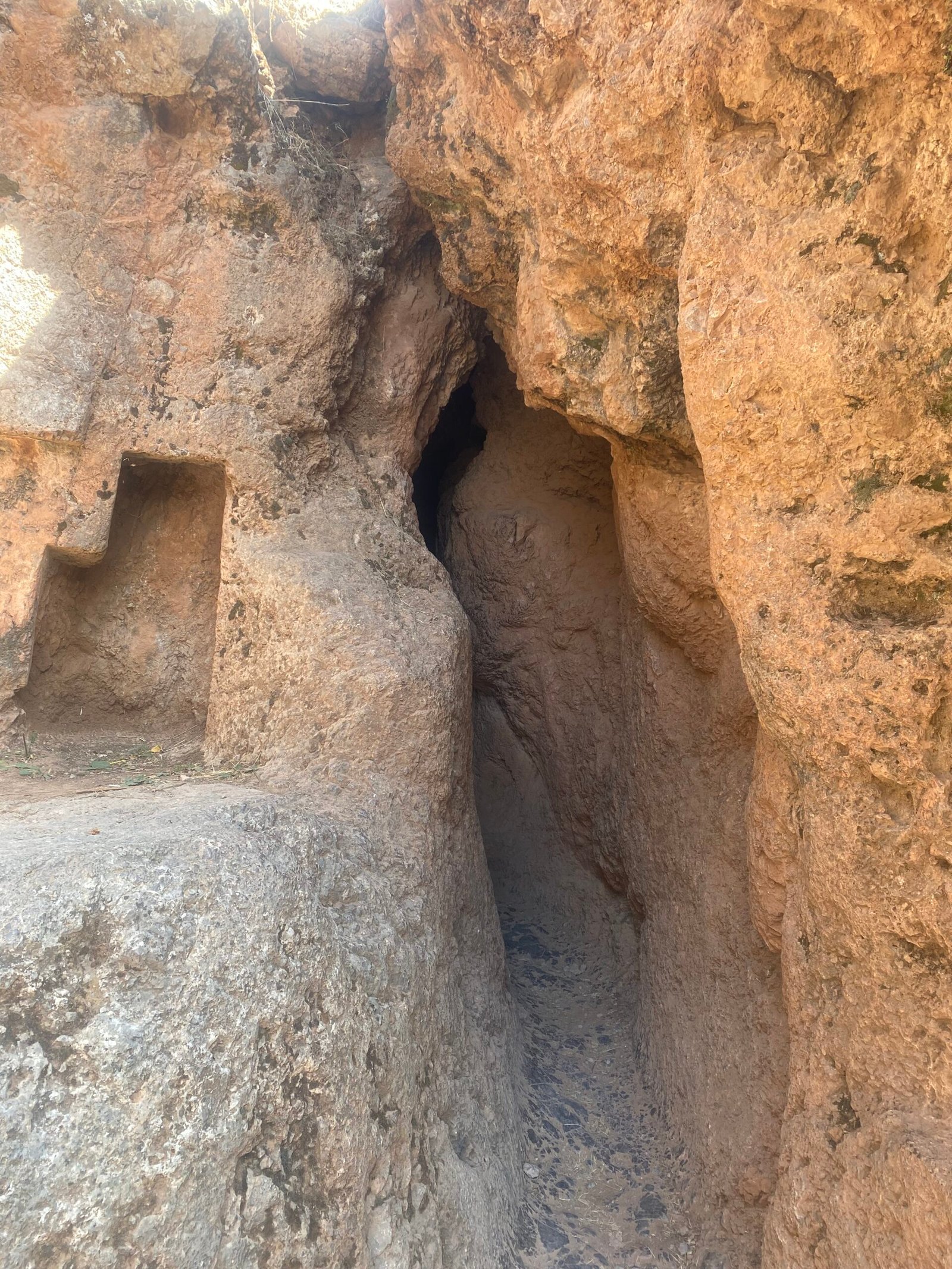
The tunnels (Chincanas)
There are two chincanas, the smaller one next to Warmi K'acchana is short in length and has become a distraction for visitors. The larger one is located further north, under a large limestone rock. Access to the large Chincana is not allowed for any reason, as those who have entered it have never returned. According to geologist Dr. Carlos Kalafatovich, these tunnels, called chincanas, are the result of erosion caused by groundwater that circulated in the caves. However, chroniclers such as Guaman Poma de Ayala, Inca Garcilaso de la Vega, among others, agree that the Great Chincana is a secret tunnel with various connections to different parts of Tahuantinsuyo.
The story goes that a group of adventurers equipped themselves and entered this Chincana, about which nothing was known for months, until one of them appeared one day in the temple of Santo Domingo, which used to be the Qoricancha, holding a corn frame made of solid gold. It is said that the Incas, during wars, could not stop worshipping their gods, which is why through these underground entrances they would head to the Qoricancha to participate in ceremonies and offer gifts to their deities.
Exploring the chincanas offers a mysterious and fascinating experience that allows visitors to immerse themselves in the history and culture of the ancient Inca empire. However, it is important to observe restrictions and precautions to ensure safety and respect for the surroundings.
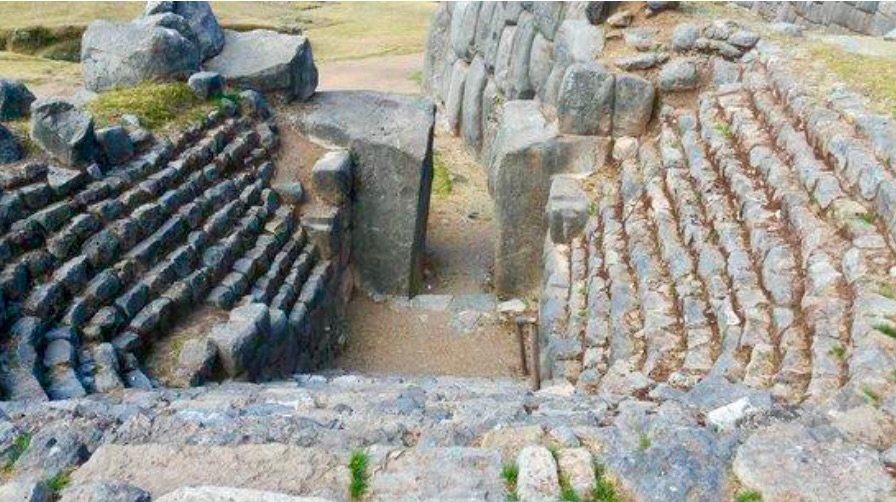
The Temple
The fortress was the place where the Incas worshiped the sun in this temple for religious ceremonies. It is believed that tens of thousands of people gathered on special festivals to make offerings and perform certain types of pilgrimages.
Sacsayhuamán, once the centerpiece of sacred celebrations of the Incas, is a site steeped in spirituality and millennia of history. This imposing fortress, considered sacred to the ancient inhabitants of the Andes, represented a place of worship and celebration of the sun, the principal deity for the Incas. During special events, tens of thousands of people would converge here to participate in religious ceremonies, offering gifts and making meaningful pilgrimages. The magnificence of this place and its religious significance continue to inspire wonder and contemplation in modern visitors.
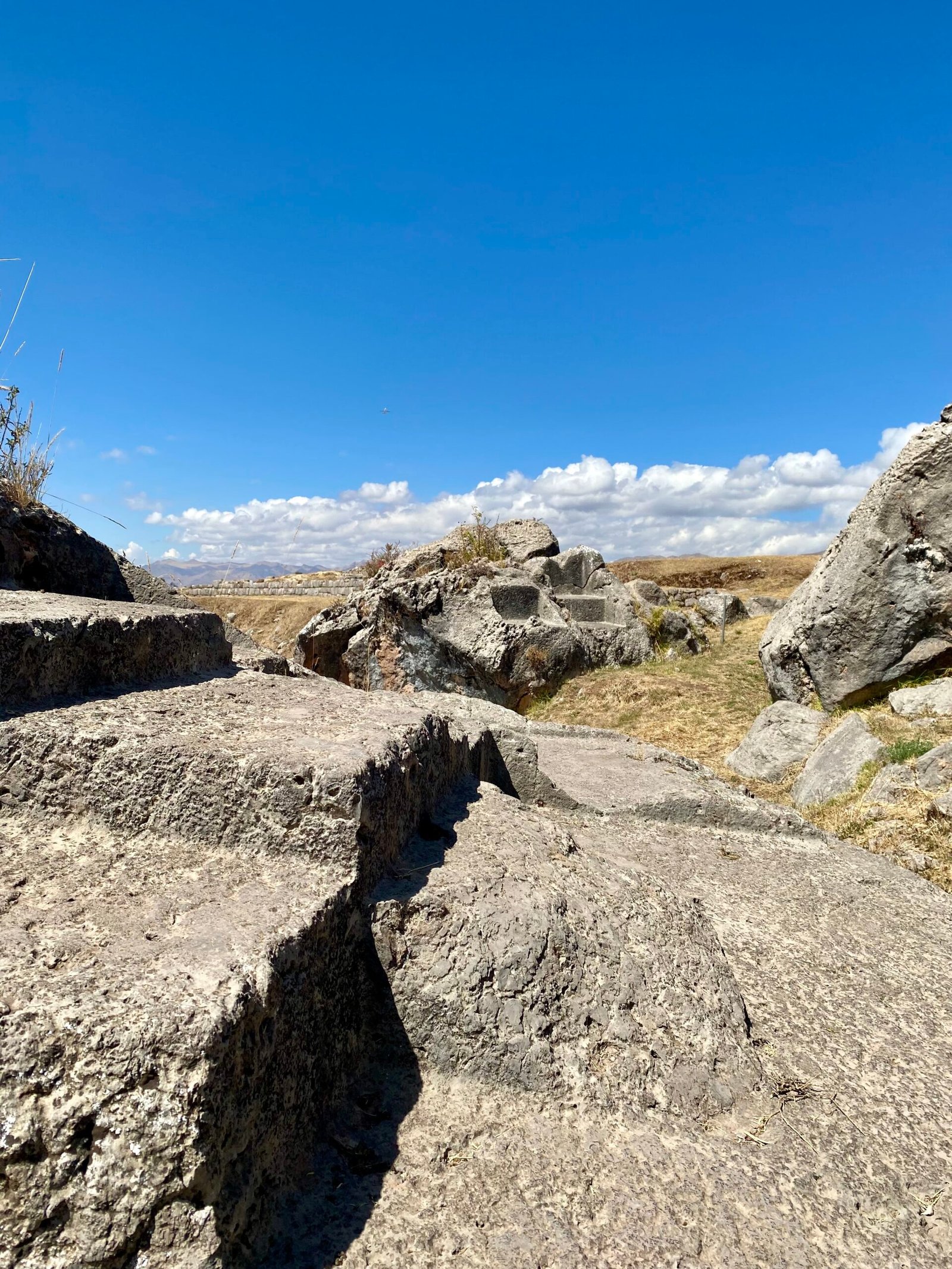
The Throne of the Inca (K’usilluc Jink’ian)
Known as “where the monkey climbs” by the ancient Incas, this site is a series of rock-carved seats, offering not only breathtaking panoramic views but also an experience of profound artistic beauty. Located on the eastern side of the hill, this place is a tranquil retreat where visitors can reflect on the majesty of nature and experience a connection with this region's ancient past.
Practical Informations
How to reach Sacsayhuamán?
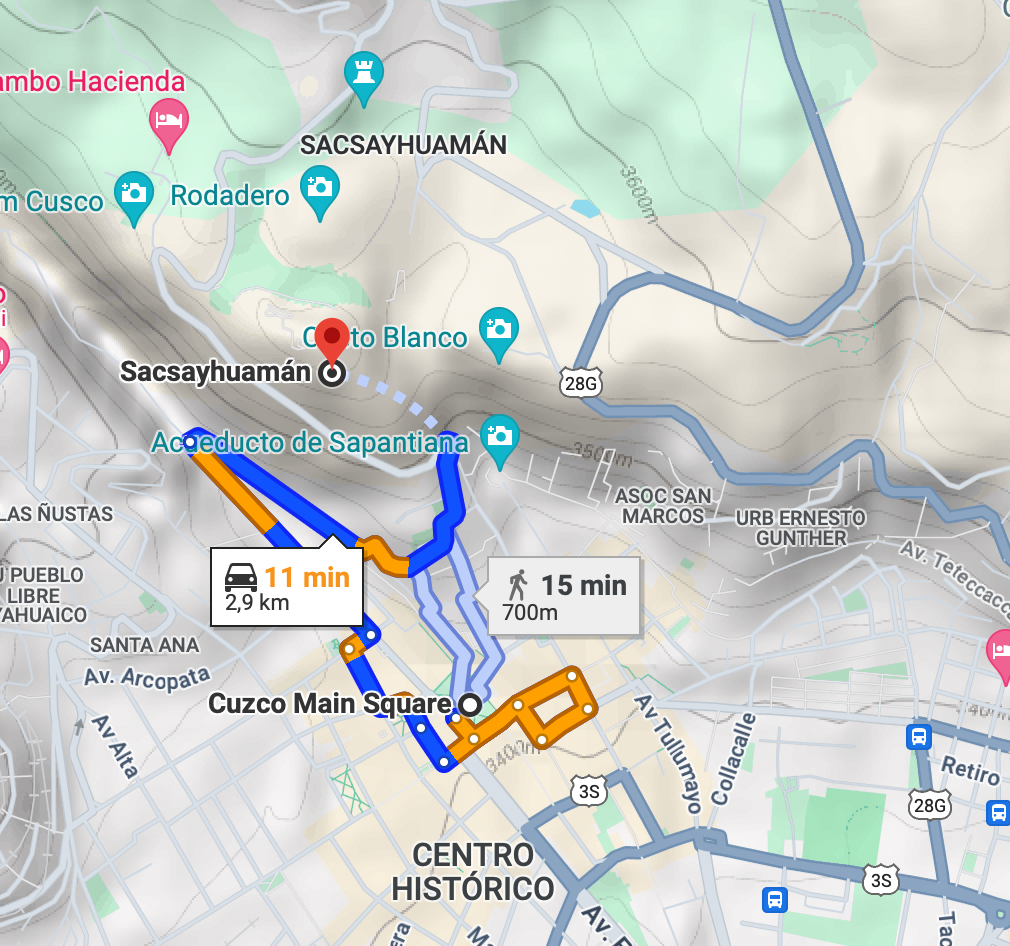
The Fortress is located 2 km from the historic center of Cusco, and towers over the city from its 3,700 m. a.s.l. To reach it, you can walk for about 45 minutes down a steep little street called “Suecia street”
A good and inexpensive alternative are the public buses (the Cristo Blanco or the Huerto) that will take you to the entrance of the site in about 20 minutes and for a modest $1.
Otherwise, you can take a cab that costs about $4 to $6 and will take you to where you want to go in 10 minutes.
Personally, I recommend that you go up to Sacsayhuamán by bus or cab to save your energy to visit the archaeological site and eventually walk back to Cusco, following the downhill route of “Suecia Street.” Do not underestimate the altitude at which you find yourself: above 3,000 m. a.s.l. even a small climb becomes strenuous.
Tickets and costs

If you are planning your trip on your own, without referring to a tour operator, the ticket to purchase to access Sacsayhuamán is the Cusco tourist ticket. There is not a single ticket for each attraction you will visit, but a “tourist” ticket that groups several places together. The choice, made by the local tourist board, wants to promote secondary sites in this way.
There are 4 different Cusco tourist tickets:
- Full tourist ticket of Cusco
The full Cusco tourist ticket costs US$40 (there are discounts for minors, students and those with Peruvian passports) and is valid for 10 days. With this ticket you can access as many as 16 archaeological sites located between Cusco and the Valle Sagrado: Sacsayhuaman, Qenqo, Puca Pucara, Tambomachay, Museum of Contemporary Art, Regional Historical Museum, Museum of Folk Art, Qoricancha Site Museum, Qosqo Center for Native Art, Inca Pachacuteq Monument, Pikillaqta, Tipon, Pisac, Ollantaytambo, Chinchero, and Moray.
- Partial tourist ticket – Circuit 1
This tourist ticket costs 21 USD (with no discounts except for Peruvians) and is valid for one day only. The tourist sites included are: Sacsayhuaman, Qenqo, Puca Pucara and Tambomachay.
- Partial tourist ticket – Circuit 2
The Circuit 2 ticket also costs US$21 but is valid for 2 days. Included in the ticket is access to as many as 8 tourist attractions: Museum of Contemporary Art, Regional History Museum, Folk Art Museum, Qoricancha Site Museum, Qosqo Center for Native Art, Inca Pachacuteq Monument, Pikillaqta and Tipon.
- Partial tourist ticket – Circuit 3
This ticket is valid for 2 days and costs 21 USD. The archaeological sites included are located in the Valle Sagrado: Pisac, Ollantaytambo, Chinchero and Moray
Be wary of other offers available online and purchase the official tourist ticket directly at the entrance of the archaeological site you will visit first on your tour. You must bring with you an ID (passport, student card, etc.).
Caution. This ticket does NOT include entrance to Machu Picchu or other sites such as Rainbow Mountain, which must be purchased separately. Also, the tickets do NOT include guides, who (if you want them) must be paid separately and set their own price.
When to visit Sacsayhuamán?
The best time to visit the Cusco region is during the dry season, which runs from mid-April to the end of November. This is because you can visit archaeological sites, such as the Sacsayhuamán fortress, or do other outdoor activities without the risk of having to do so in the rain. Also, during the rainy season the view of the various tourist attractions is obstructed by dense fog.
The Sacsayhuamán archaeological site is open daily from 7:00 am to 6:00 pm.
Events

In Sacsayhuamán, the annual Inti Raymi festival is held on June 24, during the winter solstice, during which the Inca ritual of veneration to the Sun God, Inti, is enacted. Locals mobilize wearing colorful costumes and dance typical dances, thus repeating the tradition of their ancestors.
Inti Raymi (@PeruTravel)
Visitors from all over the world come to this festival, booking their seats well in advance. In fact, the sale of tickets to attend this festival begins as early as April 15 on Teleticket.
The central ceremony consists of:
- Ceremonial seating.
- Report on the 4 suyus or regions: Qollasuyu, Kuntisuyu, Antisuyu and Chinchaysuyu.
- Rite of Chicha.
- Sacred Fire Rite.
- Lama (Andean camelid) sacrifice and omens.
- Sankhu (sacred bread) rite.
- Q’ochurikuy (folk worship).
Attending the Inti Raymi festival is a unique experience that allows visitors to immerse themselves in the culture and traditions of the ancient Incas while witnessing dance performances, music and sacred ceremonies under the open sky of Sacsayhuamán. It is advisable to book in advance to guarantee a place at this extraordinary event.
Useful tips
The fortress, like the city of Cusco, is located well above 3,000 m. above sea level. For this reason, it is essential to allow your body a period of acclimatization before making physical exertions. Therefore, avoid sightseeing or long walks during the first few days after your arrival.
Against mountain sickness, traditional remedies based on coca daughters, such as teas, caramels or chewing leaves, are very effective. In addition, you can find tablets in pharmacies that help soothe symptoms such as headaches, etc.
Being at such a high altitude, the climatic agents are more intense. Always carry sunscreen with you, to be reapplied several times a day, sunglasses, a hat and windbreaker.
What to see in the surrounding area?
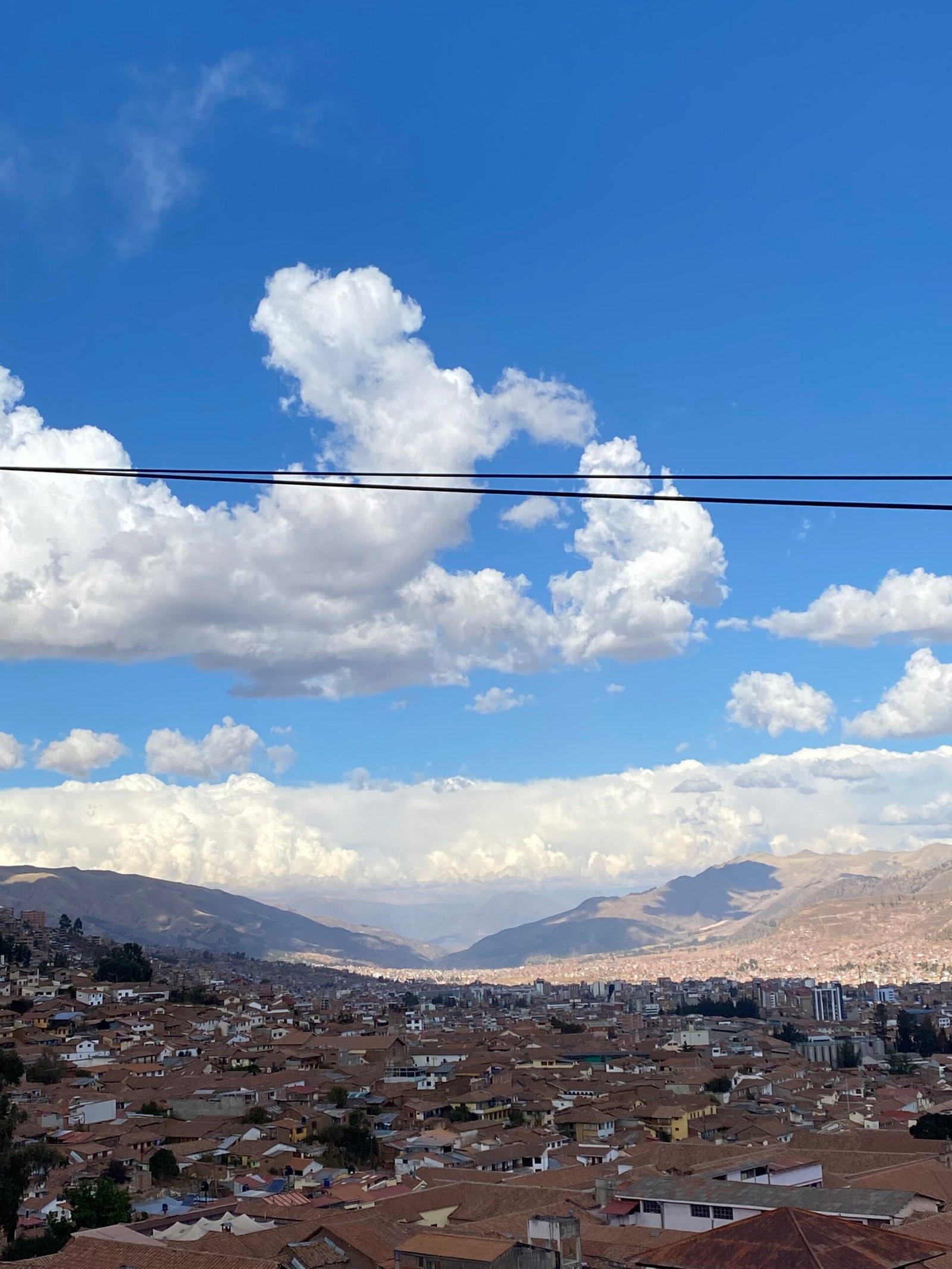
Cristo Blanco viewpoint
Once you have finished visiting Sacsayhuamán, you can consider reaching the Cristo Blanco located a few minutes' walk from the main entrance of the archaeological site. This is an 8-meter-high sculpture of Jesus Christ located on Pukamoqo (red hill), a place considered sacred by the Incas. Entrance is completely free and you can take advantage of a striking view of the city of Cusco.
Similar articles
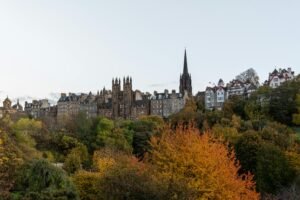
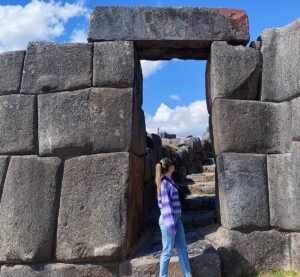
7-day itinerary to discover the Sacred Valley of the Incas. From Cusco to Machu Picchu

